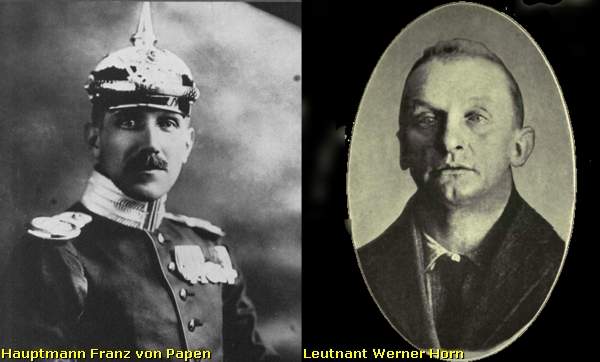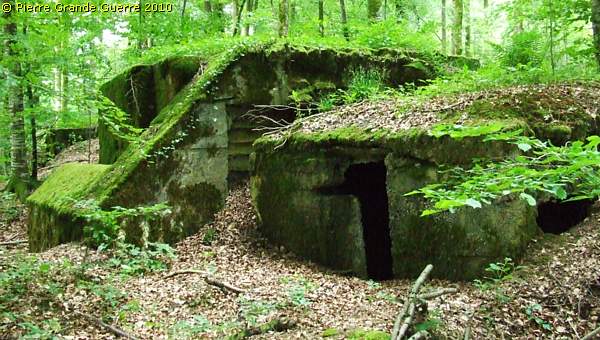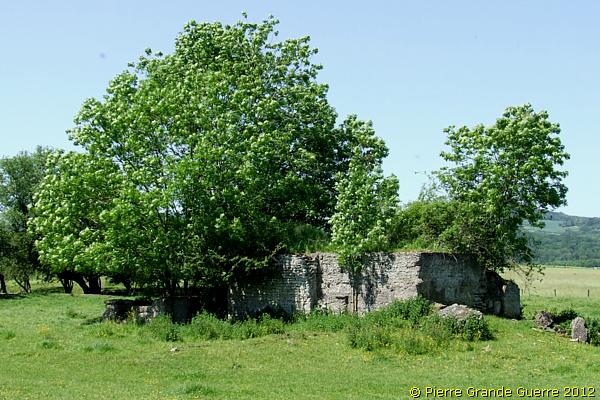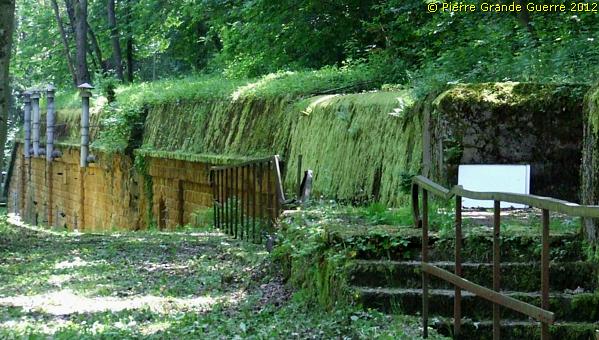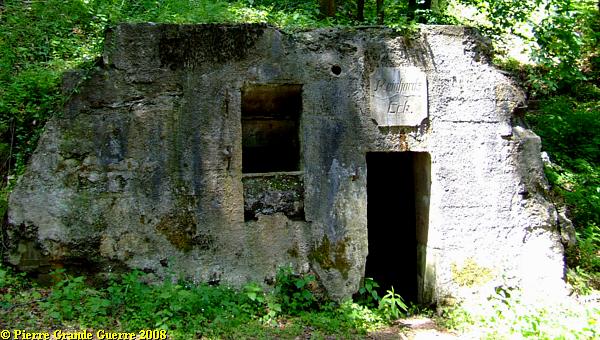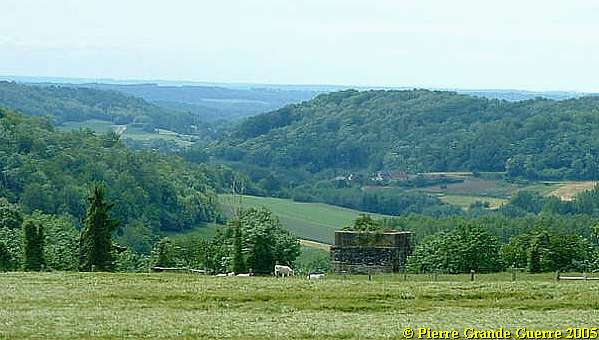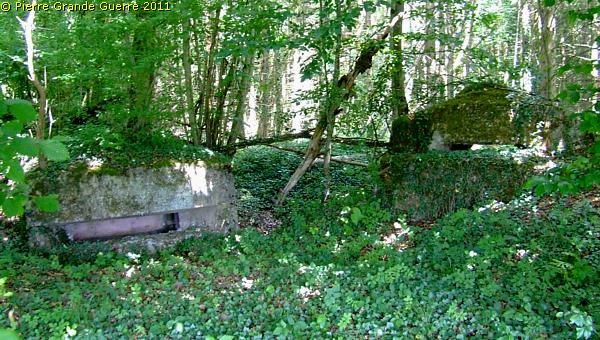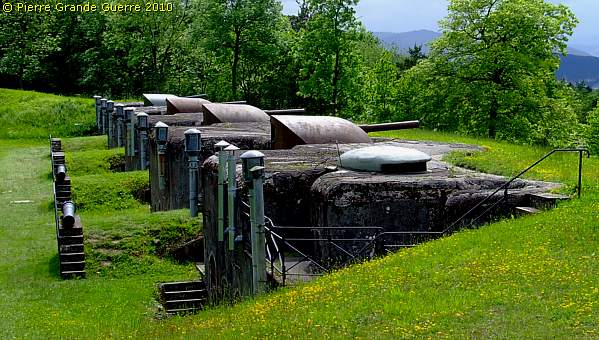CHAMPAGNE - St. Hilaire-le-Grand - Mont Navarin
Year of visit: 2005
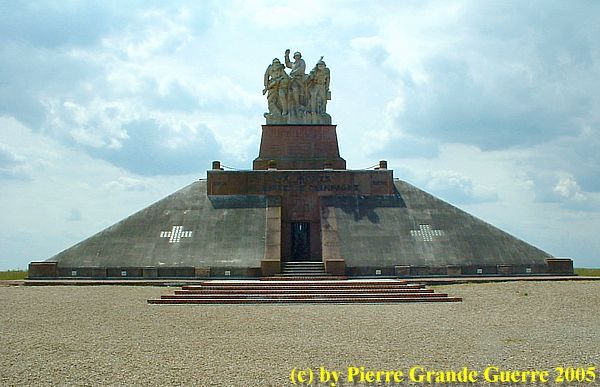
A visit to St. Hilaire-le-Grand with its Russian War Cemetery and to the Mont Navarin in the Champagne, in the front sector of Souain. We start on the D 19, and later we continue via the D 977 and D 320. This an area of 5 large battles in all 4 years of war, fought by the French, the Russians and the Americans.
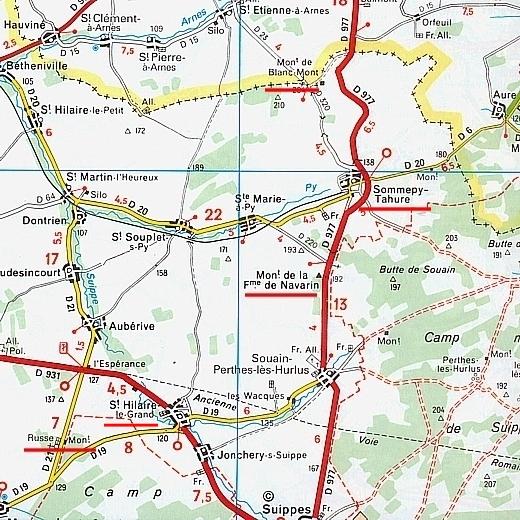
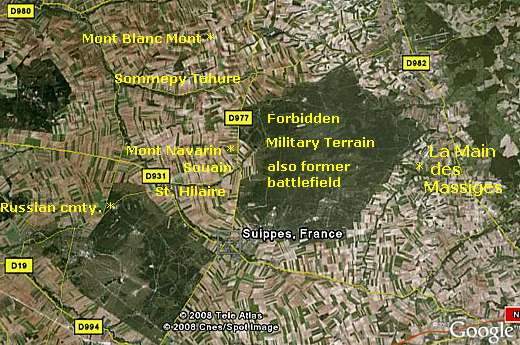
Near St. Hilaire le Grand, along the D 931, stands a French Artillery Bunker.
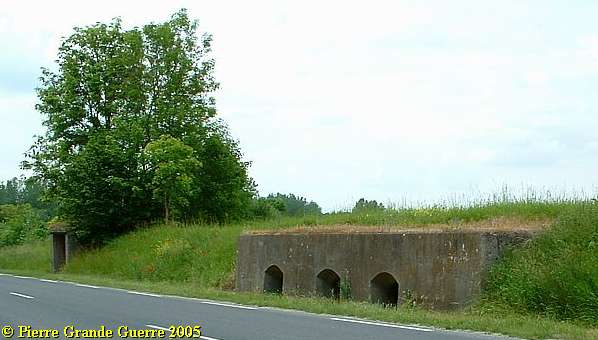
Right side: the bunker for stocking shells.
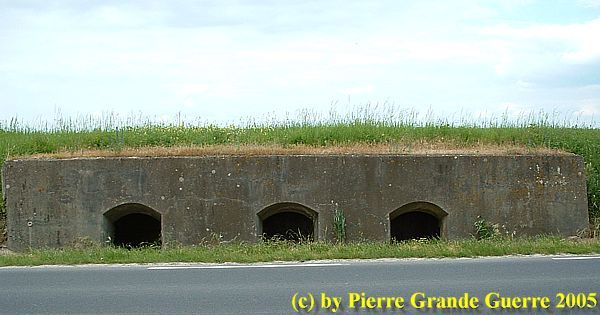
In the interior we found traces of vandalism; it is alas being used as a dump.

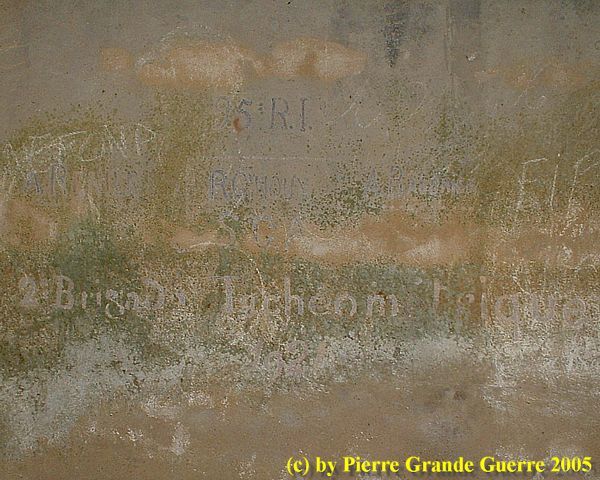
Left side, the bunker for an artillery gun.

Champagne: 5 large Battles
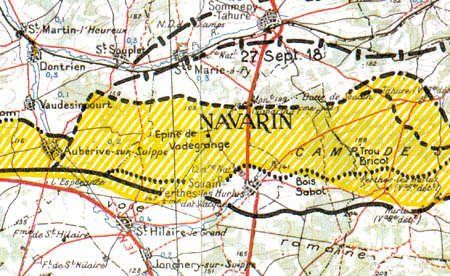

For 4 long years, in a relatively small area
measuring approximately 30 km by 4 km, 103 French divisions, 4 American
divisions, and 2 Russian brigades were engaged, together with Polish
and Czechoslovakian regiments.
From Moronvillers, the ridge of Navarin, and the hills of Souain,
Tahure du Mesnil and La Main de Massiges, the Allies and the Germans
faced each other during heavy fighting.
Five large battles took place here :
the
"Nibbling" Battle
of winter 1914-1915;
the
French offensive
of 25 September 1915, which had
limited success;
the
retaking of the massif of Moronvillers
from the Germans in
April-May 1917;
the
blocking of the final German attack
by the 4th Army of
General Gouraud on the 15th of July 1918.
The victorious
Franco-American offensive
of 26 September 1918,
which liberated Sommepy, until 3 October 1918, the American victory at
Mont de Blanc Mont.
Camp
Militaire de Suippe
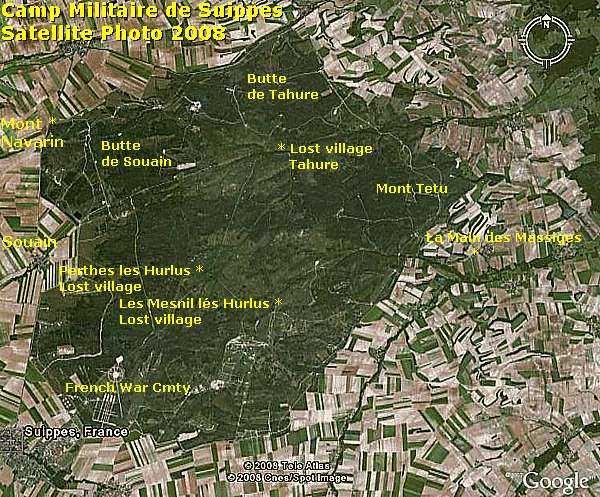
A large part of the former battlefield around Souain is now the forbidden area of the French Army, the “Camp Militaire de Suippe”. The army uses the area, northeast of the village of Suippe, for military exercises, dangerous to the public. The army opens it’s grounds for visitors only one day a year. Because I have not been so lucky, I can only show this satellite photo of the area.
There are still traces and relics to be found on the premises of the military camp. Mainly traces from the during this war period destroyed, lost villages of Perthes lés Hurlus, Les Mesnils lés Hurlus, and Tahure. In this area are also some strategically important ridges, like the Butte de Souain, the Butte de Tahure, and the Mont Tetu. The main part of La Main des Massiges (last page of this Champagne chapter) is just outside this area in the east.
Later in this Champagne Battlefields-chapter we follow the road northward, on the edge, west of the military camp.
West of St. Hilaire le Grand, along the D 21, we visit a rather exceptional Memorial for the 44.000 Russian soldiers, who fought in France between 1916 and 1918.
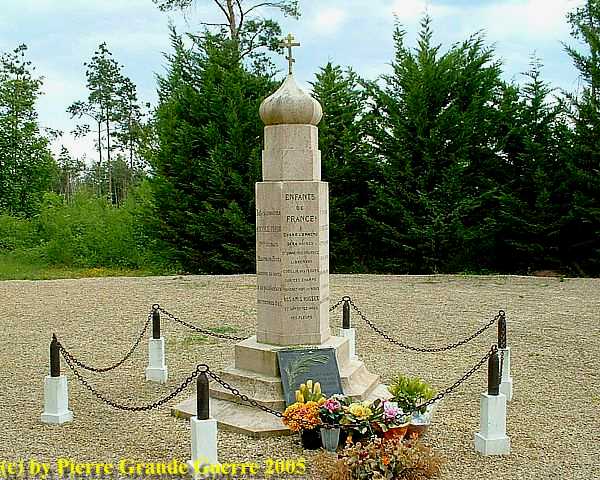

Russian Troops in France

In 1916, at the request of the French government, Russia sent an expeditionary force of 44.000 men to France, in 4 brigades, 2 of these were engaged in the Champagne.
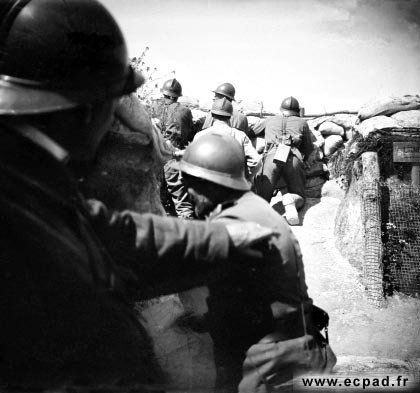
At the time of the revolution in October 1917 and after the mutinies of the Nivelles Offensive, the brigades were broken up and retired from the front.
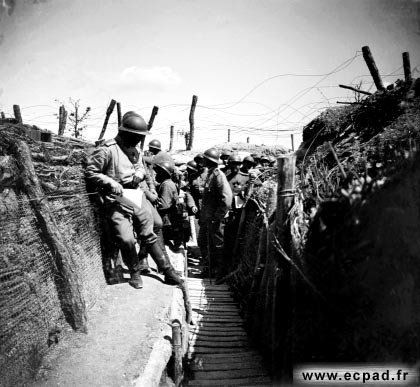
Some Russian officers, together with some volunteers, then formed a "Russian Legion for Honour", and continued fighting until the Armistice in French uniform, as part of the Maroccan Regiment.
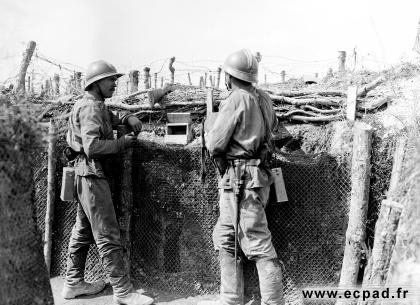
Of those 2,848 Russian volunteers 313 were killed, 89 did get a military medal, 373 did get the "Croix de Guerre", the War Cross. The Russian losses from 1916 to 1918 were in total 4,000 soldiers killed, of which 1,000 lie in the nearby cemetery.

On the other side of the raod we visit the Russian War Cemetery of St. Hilaire le Grand .
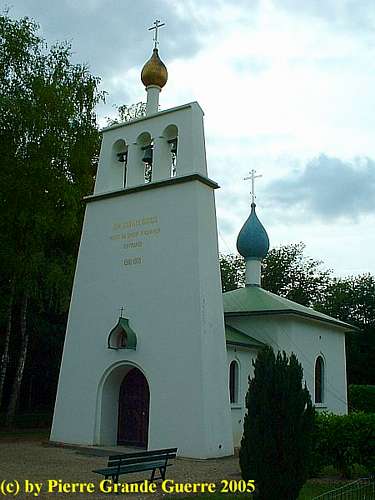

This Russian soldier died only 8 days before the Armistice.
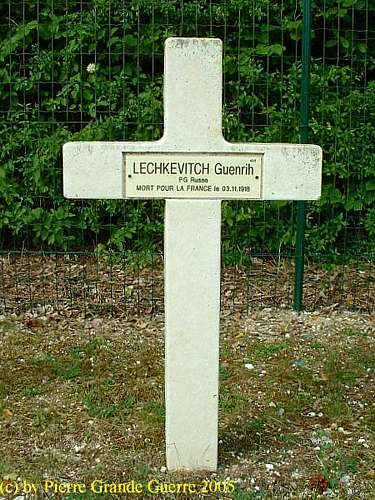
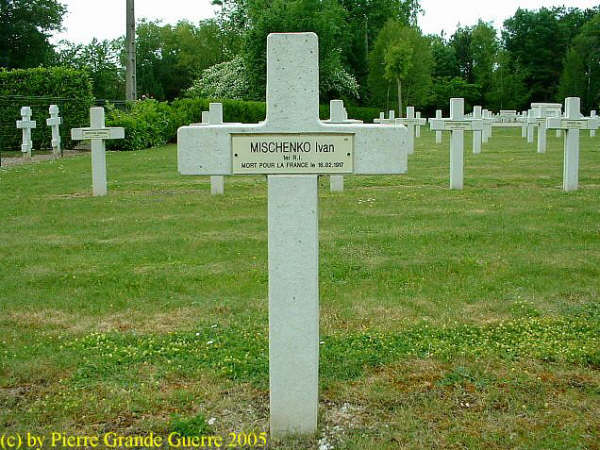
We return to the village of St. Hilaire le Grand. Via the D 29 we arrive at Souain, where we go northward via the D 977 to the Mont de la Ferme de Navarin, shortend to Mont Navarin.

Mont Navarin, Navarin Hill , with it's impressive Ossuary an it's impressive sculpture of French soldiers in action.

The memorial stands on the same spot, where the infamous "Ferme de Navarin", Navarin Farm, used to be.
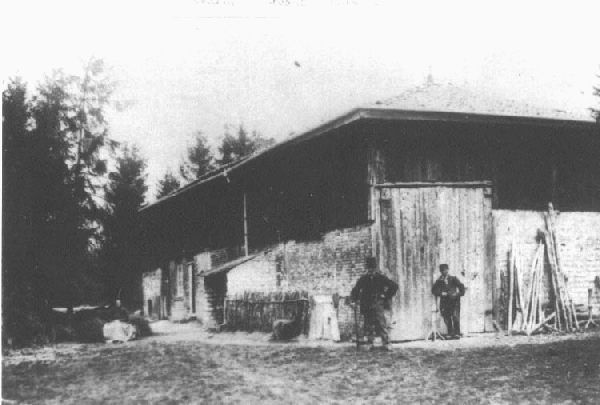
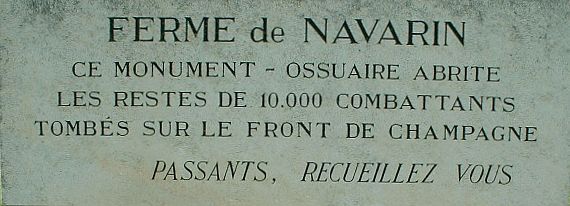
Some French period photos made near Souain, south of the Mont Navarin.
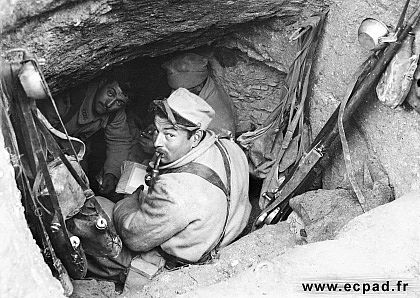
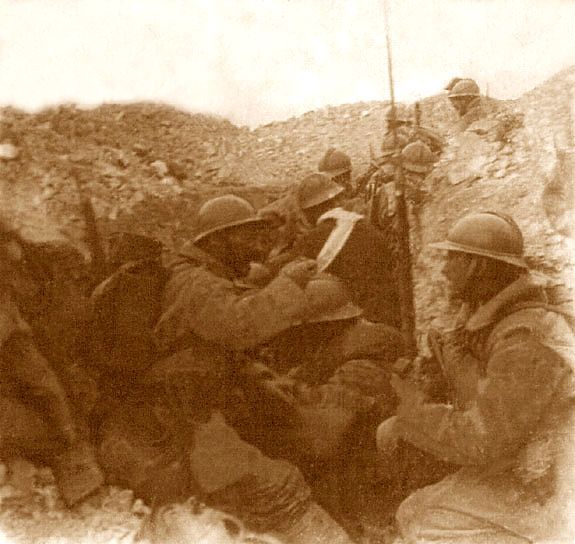
The impressive sculpture on top of the Memorial - Ossuary. Notice the details of the equipment of the soldiers.
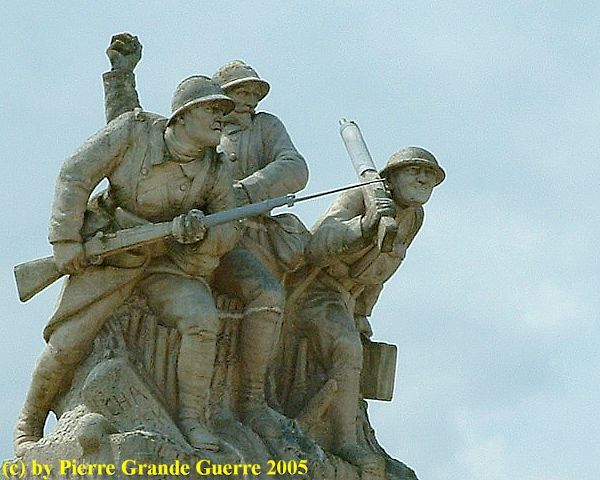
We pass Mont Navarin northward. North-south view from a German Bunker towards the Butte de Navarin at the horizon.
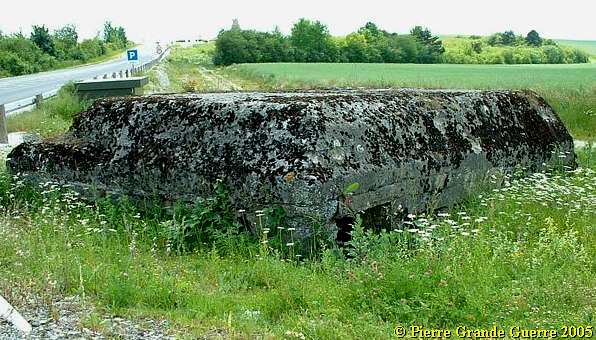
This German bunker was a part of the "Lubeck" trench system. On the trench map below: the German Lubeck trenches north of Mont Navarin. The French trenches in the south around Souain.
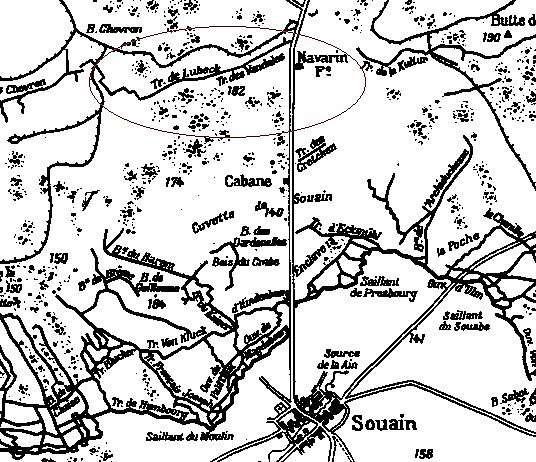
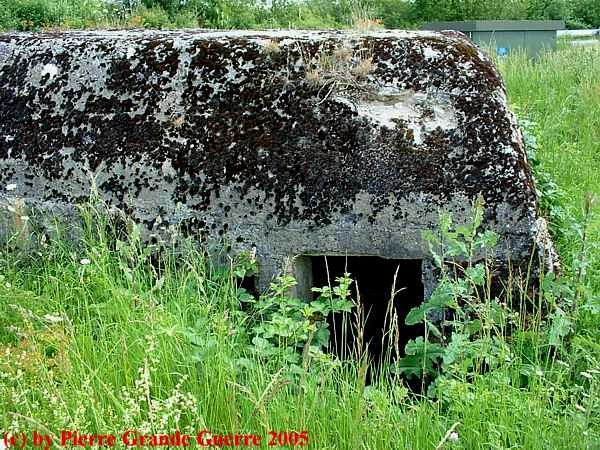

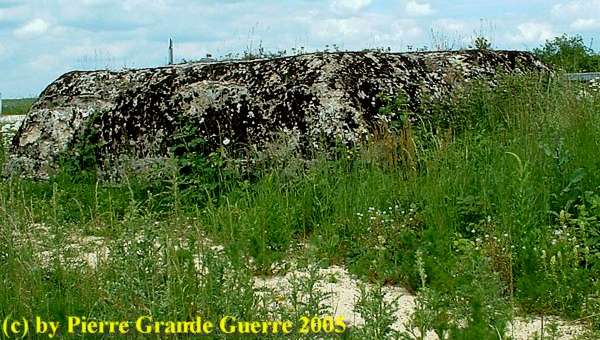
We go further northward to Sommepy, to follow the traces of the U.S. 2nd Division in October 1918 at the Mont de Blanc Mont.
Continue to: " Sommepy-Tahure - Mont de Blanc Mont "
